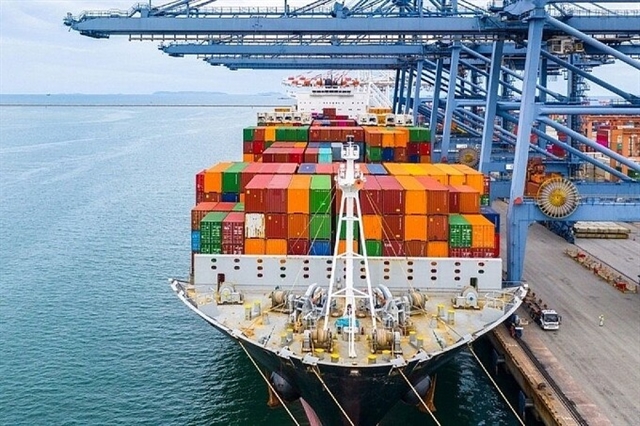 Economy
Economy

The Vietnamese central bank has a number of policies, including tightening credit growth, designed to improve the health of the country’s banking system. Jonathan Cornish, Head of Asia-Pacific Financial Institutions at Fitch Ratings, talks with Việt Nam News reporter Nguyễn Thu Hà about the policies and outlook of the country’s banking system in 2019 and in the next few years

|
| Jonathan Cornish |
The Vietnamese central bank has a number of policies, including tightening credit growth, designed to improve the health of the country’s banking system.
Jonathan Cornish, Head of Asia-Pacific Financial Institutions at Fitch Ratings, talks with Việt Nam News reporter Nguyễn Thu Hà about the policies and outlook of the country’s banking system in 2019 and in the next few years
The State Bank of Việt Nam (SBV) set a credit growth target of 14 per cent for credit institutions in 2019, much lower than the 18 per cent average rate of the previous years. In the context that many central banks in the region are loosening their monetary policy to support economic growth amidst the global slowdown, what do you think of the move?
We would view a moderation in loan growth, if sustained, positively, especially in the context that system leverage – as indicated by total bank credit/GDP of 134 per cent at the end of 2018 – is already very high, and significantly higher than the medium for ‘BB’ rated jurisdictions (around 60 per cent).
It is not unusual among emerging markets for system credit growth to taper off after years of rapid expansion, and it could be positive for the system if the economy can continue to grow at a relatively high pace while reducing its reliance on credit – especially from the banking sector – to support that growth.
Governments and regulators are likely to set policy to meet their own agendas, including supporting economic growth. However, the outlook for economic growth in Việt Nam remains positive.
What about other policies that the SBV is taking to improve the country’s banking system?
Accelerating non-performing loan (NPL) resolution (in Việt Nam’s case, with reference to Resolution 42) is generally positive for banking systems, but it is not uncommon in emerging markets for this process to be slow. Việt Nam has experienced implementation challenges, with the SBV admitting that the lack of a specialised debt trading market hinders bad debt resolution. That said, Resolution 42 is intended to address that, while it should also further discourage borrowers from defaulting on their loans, since it empowers banks to seize their collateral.
The adoption of Basel II standards would be positive if banks pay greater focus on the risk profile of their exposures and better price risk. Under Basel II, the definition of risk-weighted assets is expanded by incorporating additional capital charges for operational and market risks, while adopting a more granular and stringent approach to credit risk. However, Basel II adoption will increase pressure on banks to raise more capital, which could hinder their ability to maintain current growth rates.
In our report, “Measuring potential capital shortfalls of Vietnam banks” dated September 12, 2018, we highlighted that banks would require substantial capital infusions to meet Basel II implementation. That said, Việt Nam continues to lag the global banking capital standards, which have already moved into Basel III or beyond.
What should Vietnamese banks and the Government do to meet capital requirements under Basel II?
Our September 2018 report highlighted that, for the banks to meet higher regulatory standards, they would need to raise significant amounts of capital, which Fitch estimates to be in the order of US$4.1 billion to $6.5 billion.
The lack of development in Việt Nam’s domestic capital market and foreign-ownership caps (30 per cent) have hindered the pace of strengthening bank balance sheets. Foreign banks’ interest in Việt Nam is evident from the existence of branches. While foreign investors may be attracted to Việt Nam’s growth prospects, we believe they would also focus on the intrinsic health of the local banks, including asset quality.
What is your assessment about the status of Vietnamese banks?
The performance of Việt Nam’s banking system has been aided by strong and stable economic growth over the last few years. Better profitability has enabled some Fitch-rated banks to fully write-off their Vietnam Asset Management Company (VAMC) bonds. Nevertheless, we believe system legacy NPLs to be under-reported, with asset quality potentially masked by high credit growth.
Rapid growth in the past likely contributed to asset quality stress. The persistently strong credit growth, including in newer areas of retail lending, could present new asset quality issues in the event of slower economic growth.
Any deterioration could be exacerbated by the system’s relatively thin loss-absorption buffers, including low capitalisation and profitability, albeit we expect the latter to continue to improve in 2019. The banks need to raise additional capital to meet higher regulatory thresholds, which will add to funding costs. In the meantime, the banks’ stable funding and liquidity profiles remain stable thanks to the macroeconomic environment.
What is the outlook of Việt Nam’s banking system in 2019 and in the next few years?
We expect Việt Nam’s strong economic growth to be sustained in 2019-2020. We see the banks maintaining their momentum in terms of profitability in 2019, aided in part by low credit costs and rapid growth in the higher-yielding retail loans. However, the latter could give rise to future asset quality problems in the event of a slowdown in the economy. In that regard, the US-China trade war poses uncertainties in terms of global and regional growth prospects.
What measures should be taken to ensure the banking system's success in 2019 and in the coming years?
Fitch does not provide advice or recommendations when it comes to matters such as reforms. However, the lack of depth in local capital markets has increased concentration of credit and risk on the banking system, which has weighed on their credit profiles. Similarly, limits in terms of foreign ownership have not only hindered capital raising, but the development of the industry, including the strengthening of banks’ risk management and corporate governance frameworks. These issues have potentially been exacerbated by the slow pace of industry consolidation to weed out the weakest banks.While there have been improvements in the regulatory regime, the overall framework lags global standards. — VNS









